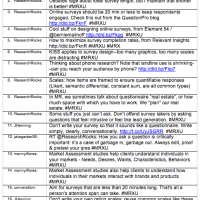A huge topic for Market Research & Insights professionals is data quality, and in most cases, a key component of survey research data quality is driven by sample quality. The… Continue reading Does Online Panel Quality S*ck?
Does Online Panel Quality S*ck?





